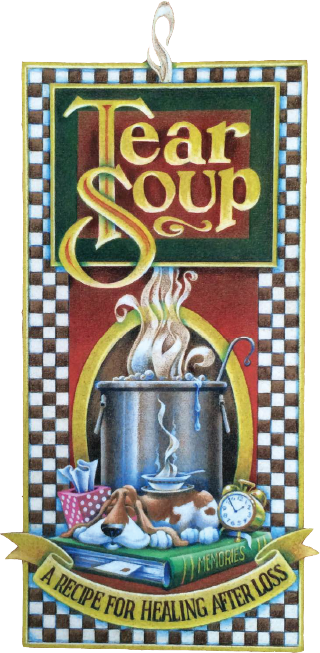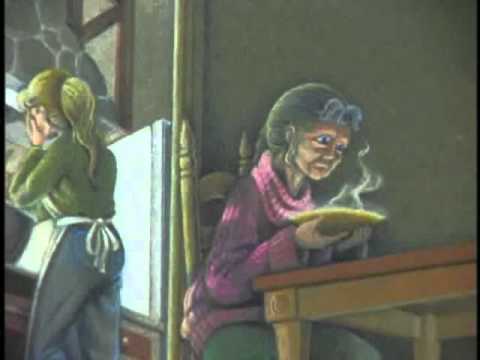
Tear Soup
“Tear Soup: A Recipe for Healing After Loss” is brilliant. It’s one of those deceptively simple “children’s books” about loss and grief that is so profound, layered, and moving that it seems like it’s written as much for grieving adults as it is for kids.
In the psycho-emotional chaos of grief, focusing can feel like a herculean task. All too often, 300-page self-help books peppered with research on the grieving process are cracked open and discarded after a few pages. It’s just too damned hard to pay attention when loss has shattered your heart and hijacked your brain.
If done well, a children’s book like “Tear Soup” can distill much of the wisdom contained in psychology and self-help texts and deliver it in the form of a bite-sized parable. The simple language and beautiful illustrations of “Tear Soup” make it easily digestible, even for those in turmoil. Simple language and beautiful illustrations are comforting in moments when the world seems overwhelming and nonsensical.
“Tear Soup” is a simple parable about an elderly woman named Grandy who suffers a tragic loss late in life. We never actually find out specifically what her loss was, which makes the story feel even more universally applicable.
Grandy decides that she will face her loss by making tear soup. Right off the bat, the soup metaphor alludes to the importance of allowing time for grief: “For many years the custom of making tear soup had been forgotten, as peoples’ lives became more rushed and they found it easier to pull soup in a can from the shelf and heat it on the stove.”
“Tear Soup” emphasizes the importance of making soup from scratch — making it your way, in your own time, with your own ingredients. Healing doesn’t come in a can, and it can’t be rushed. Everyone walks through grief differently.

Grandy ponders her tear soup
Credit: i.ytimg.com
Grandy knows, too, that she needs a big pot to make her tear soup, so there’s room in her soup for “all the memories, all the misgivings, and all the tears.” She knows that there are a lot of feelings that arise in the wake of a loss, and she knows that those feelings are big. She also knows how important it is to create space for all those big feelings and to include them all in her recipe. If it comes up, it goes in the pot. This is not a recipe that tolerates emotional repression.
The book also addresses many of the issues that grief engenders. It shows how well-meaning friends, family and acquaintances are often awkward and fearful when attempting to show up for a grieving person, when what the grieving person wants most is just a sympathetic look and a hug. It also reminds us that we need to give the gift of patience as a grieving person cooks up their own batch of tear soup, however long that takes.

 “Tear Soup: A Recipe for Healing After Loss” by Chuck DeKlyen and Pat Schwiebert
“Tear Soup: A Recipe for Healing After Loss” by Chuck DeKlyen and Pat Schwiebert


 “In Case You Don’t Live Forever” by Ben Platt
“In Case You Don’t Live Forever” by Ben Platt
 Our Monthly Tip: Make an “In Case of Death” File to Ease Loved One’s Grief
Our Monthly Tip: Make an “In Case of Death” File to Ease Loved One’s Grief
 Passing of Beloved Comedian Births a New Comedy Festival
Passing of Beloved Comedian Births a New Comedy Festival














